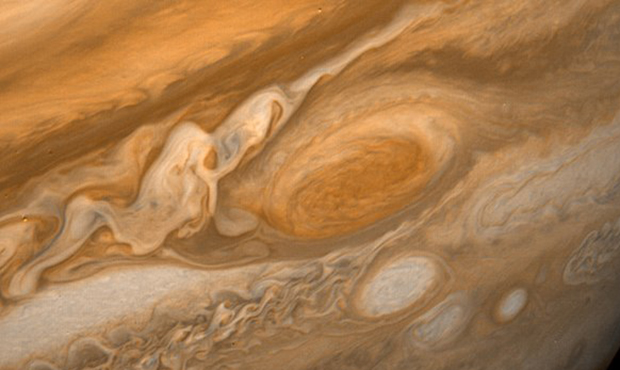August skies offer some great Arizona views of Jupiter
Jul 31, 2019, 2:08 PM

The Great Red Spot on Jupiter (NASA Photo)
(NASA Photo)
August skies offer some amazing sights, as we move deep into the summer!
The annual monsoon will create some periods of clear and dust free skies, as summer thunderstorms help clear the air.
August is known for one of the best meteor showers of the year. The annual Perseid shower will be weaker than expected, as a nearly full moon will arrive near the peak of this shower.
There will be a host of planets to view as well.
Around this time last year Mars was the most amazing planet in our skies, but we will have to wait till October of 2020 for Mars to return to its former glory.
The evening skies of August reveal two major planets in the southeastern sky.
Look for the mighty planet Jupiter as it remains bright in the sky at sunset. Jupiter is most amazing in a small telescope, revealing not only up to four of its main moons, but lots of detail on the cloud tops.
There is even an opportunity to view one of the largest storms in the solar system, the Great Red Spot.
Over the past few months, the Great Red Spot has been shrinking, as material is leaving the center of this famous storm. No one knows for sure why this is happening.
The Jovian Red Spot can be seen in a telescope with at least a magnification of 200 times the human eye.
The other planet that is easy to view in southeastern skies is Saturn.
Saturn is amazing in that you can actually view the ring system in a small telescope as well and it really looks like something that is artificial.
You also get a rare chance to view the innermost planet, Mercury, some 20 degrees high in the northeastern sky, just before dawn, around Aug. 10.
This is a very small planet as it measure only 3,032 miles in diameter and remains close to the sun.
A year on Mercury is only 88 Earth days and the planet is baked in solar radiation and heat.
Mercury is so small the Jovian moon Ganymede is actually larger.
The moon will offer some amazing views, as it will be a thin waxing crescent in the evening sky during the first few days of August, growing to first quarter Aug. 7 and getting brighter with the full corn moon/sturgeon moon on Aug. 15.
The moon then wanes and returns to last quarter Aug. 23, with a new moon eight days later.
There is still time to view the Perseid meteor shower, even though the peak of the shower, Aug. 13, will mostly be washed out by bright moonlight.
Begin to look to the northeastern sky between Aug. 31st to Sept. 8, from midnight till dawn.
You should be able to view some great meteor activity, as the light of the moon will not interfere with your viewing.
Some of these Perseid meteors are very bright and leave a small contrail in the night sky.
All of the Perseids are debris from Comet Swift-Tuttle, which orbits the sun once every 133 years.
Here is a basic finder chart for the Perseid meteor shower:

Enjoy your August 2019 skies!
To print your own monthly star chart, click here.
To view satellites/dates/times of passage, click here.
Listen to the Dr. Sky Show on KTAR News 92.3 FM every Saturday morning at 3 a.m.








